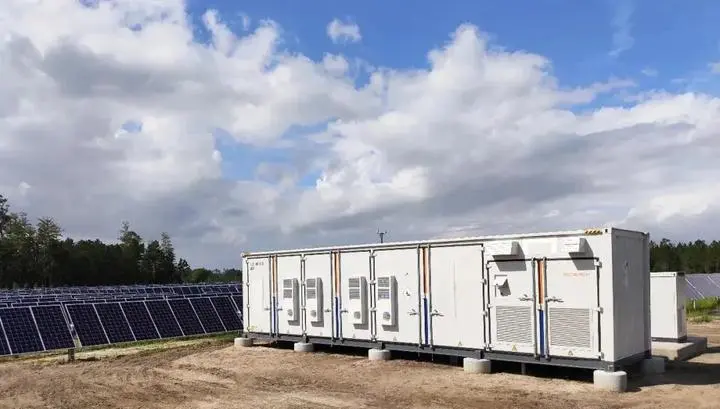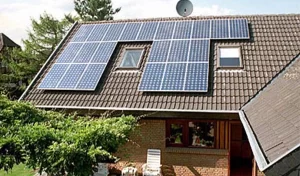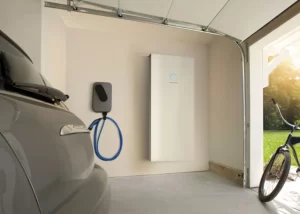Green Transformation of Communication Energy: How Far Are We from Base Stations Becoming "Power Plants"?
As the world shifts towards greener energy solutions, the telecommunications sector is no exception. The idea of base stations transforming into mini power stations is no longer just a futuristic concept. With the growing adoption of energy storage cabinets and renewable energy solutions, base stations could soon become energy hubs, providing not only connectivity but also power. But how far are we from this vision becoming reality?
The Role of Energy Storage Cabinets in Base Stations
Energy storage cabinets are essential components in modern telecommunications infrastructure. These cabinets, traditionally used for backup power, store energy from renewable sources like solar and wind, ensuring that base stations can continue to operate during power outages or peak demand periods. But now, with the integration of renewable energy technologies, these cabinets can do much more.
Imagine a base station equipped with solar panels and an energy storage cabinet. During the day, the solar panels generate electricity, which is stored in the cabinet. This stored energy can then be used to power the base station during the night or even fed back into the grid, effectively turning the base station into a power station. This not only ensures energy independence for the station but also provides an opportunity for revenue generation by selling excess energy.

How Feasible is This Transformation?
While the technology is already available, turning base stations into power stations requires overcoming a few challenges. Here are the key factors to consider:
1. Widespread Deployment of New Energy Infrastructure
For base stations to become energy producers, the deployment of renewable energy infrastructure, such as solar panels and wind turbines, is critical. Operators already have the advantage of vast site resources and existing energy storage systems, primarily used as backup power. By integrating more renewable energy sources, base stations can take a step closer to becoming self-sufficient energy hubs.
However, safety concerns, installation costs, and regulatory issues around deploying new energy facilities need to be addressed. Ensuring that these systems are reliable and secure is essential for their success.
2. Market Readiness and Business Models
In regions like Europe, where electricity market liberalization is more advanced, business models such as virtual power plants are already proving profitable. These virtual power plants aggregate the energy stored in various locations, like base stations, and sell it back to the grid during peak times, providing services like frequency regulation and load balancing.
For base stations in other regions to follow this model, the market must first mature. New business models focusing on energy services will need to emerge, allowing operators to capitalize on their energy-producing capabilities.
3. Intelligent Energy Management Systems
To truly optimize the energy produced by these base stations, intelligent energy management systems are essential. These systems would need to monitor, regulate, and manage energy flows in real-time, ensuring that the power generated is used efficiently.
Energy management must be precise and automated, allowing operators to focus on their core telecom services while maximizing the benefits of renewable energy. This integration of smart energy management will be the foundation for ensuring that base stations can seamlessly act as power generators while maintaining their primary function as communication hubs.
Case Study: Huijue Group’s HJ-D48-G Energy System
A great example of how base stations are evolving can be seen in Huijue Group’s HJ-D48-G Energy System. This product integrates renewable energy generation with stable power delivery for communication equipment, combining a low-voltage photovoltaic module, rectifier module, AC/DC power distribution units, and an advanced monitoring system. The result is a solution that provides reliable power for communication while also supporting renewable energy.
The system’s energy storage cabinet stores power generated from solar panels, ensuring that the base station remains operational even during grid failures. The product also features intelligent monitoring capabilities, allowing operators to manage energy use efficiently and reduce overall costs.
How Far Are We from Base Stations Becoming Power Plants?
The road to turning base stations into power stations may not be short, but it’s certainly within sight. With the right combination of technology, market readiness, and regulatory support, base stations could soon be major players in the energy market.
As telecommunications companies continue to invest in renewable energy and energy storage cabinets, the vision of base stations as self-sufficient energy hubs becomes more realistic. These systems not only provide reliable power for communications but could also contribute to a greener and more sustainable energy grid.
Contact us
- Email:[email protected]
- Tel: +86 13651638099
- Address: 333 Fengcun Road, Fengxian District, Shanghai
Get A Quote Now!
Related product links are available directly
Site storage products:Site storage products 归档 – (energystoragecontainer.com)
Lithium Battery:Lithium Battery 归档 – (energystoragecontainer.com)
Read more

How to Choose Outdoor Mobile Power Supply Correctly?
Outdoor portable power stations are indispensable for camping, road trips, and emergencies, ensuring a reliable energy source for devices and appliances.

Solar Revolution: How Home Systems Can Light Up Ecuador’s Energy Future
Ecuador’s energy crisis, driven by its worst drought in 61 years, has revealed the vulnerabilities of a hydropower-dependent energy system. With water levels at hydropower stations plummeting and energy shortages reaching 1080 megawatts, the nation faces significant economic and social challenges.

Lighting up the Future: How Home Inverter Energy Storage Illuminates Ecuador’s Energy Darkness
Ecuador is facing a severe electricity crisis, driven by historic drought conditions that have crippled the nation’s hydroelectric capacity, which accounts for over 70% of its energy supply.

New Power of Smart Home: Three Major Life Improvement Advantages of Photovoltaic Energy Storage System
With the rapid adoption of solar battery storage technology, the concept of a whole house intelligent photovoltaic energy storage system is becoming increasingly relevant in modern households.
